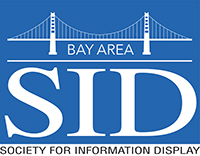Annual Chapter Dinner
Join your local display industry peers for the Bay Area SID Chapters Annual Summer evening of good food, good company and intriguing information. This informal annual gathering is widely known for its lively interaction and pleasant surroundings. This year the dinner will be a classy, picnic-style affair under the stars and Redwoods in the beautiful Santa Cruz Mountains, at the estate of Gus Carroll, our own Chapter Secretary/Treasurer, a short 10-minute drive from downtown Los Gatos.
Date: Friday, June 20, 2003
Time:
Appetizers at 6:00
Dinner at 7:00
Speaker to follow dinner
Location: Gus Carroll, our Chapter Treasurer, has very graciously invited us to his mountain retreat for this event. The address is 20930 Panorama Heights, Los Gatos, CA. Click here for a map and directions.
Cost: $30 per person. Please note that this dinner is for SID members and their guests only. You are a member if you pay your dues! Of course, it’s not too late to join. See official SID website
RSVP: Please send an email to C3@ix.netcom.com by 6/13 telling Gus Carroll if you will be coming, and the number of guests. Please indicate your preference for entree from the following three: Steak, Salmon or Vegetarian Pasta.
Payment: Send payment to address below no later than 6/18. Checks payable to “Bay Area SID Chapter”.
Gus Carroll
SID Dinner
P. O. Box 186
Los Gatos, CA 95031
Guests are advised to dress in layers, as the dinner and talk will be outside and it might get cool as the sun goes down. Flat footwear is also recommended.
After Dinner Speaker: Daniel M. Russell, Ph.D., Senior Manager, User Sciences & Experience Research Group, IBM Almaden Research Center
Topic: Surprising Visual and Cognitive Aspects of an Information Lifestyle — From Inattention to Monopixel Digital Jewelry
Abstract
People seek out and use information in an amazing variety of ways. They strap devices onto their bodies to make sure they always know the current time, have ready telephone connectivity, can send & receive messages or can lookup content in portable data pools via their PDA. At the same time, we all swim in a sea of information that’s being streamed to us via multiple channels left, right, center and behind. It is not uncommon to be in very display-rich environments — as I sit in my home office writing this, I can see 5 monitors and 6 specialized displays … and I haven’t turned around. The question for my work centers on this: What happens to the user in the middle of such a display-centric world?
From my perspective as user scientist, fascinating questions arise when we place people in such rich display settings. In my talk I’ll review some of the work we have done in my lab about the effects of having information available in multiple places and what happens to people trying to understand what’s going on. I’ll show some data that suggests that sometimes more IS more, and simultaneously, less can be better. We’ll review what happens when people need to use display environments to try and make sense of complex information, and what some of the surprising cognitive effects that lie at the interaction of people, use and information displays. We’ll then cast our vision into the future and examine what the notion of ‘display’ is in the future, and where the idea of an extended user interface might go in the years ahead.
Speaker Background
Dan Russell is really a research scientist who is currently a lab manager. He has done duty in the the war zone of product design and development, taught at universities (Stanford, Santa Clara) and been a part of the hypertext, cognitive neuroscience, artificial intelligence, education, interaction design and ubiquitous computing communities. As a consequence, he has seen the whole process from wild-eyed speculative thinking, through the functional spec, final delivery and all other constraints in battles of development… and the confusions and insights of academic research. Along the way he has written a bunch of things about various technologies and design work; ranging from models of human motor behavior through computer vision and models of people making sense of complex information. He used to give full day tutorials in the Hypertext world — emphasizing the importance of design practices to that community. In interaction design, he has “carried the water, borne the torch, advocated and evangalized — even harassed and harried” the involved parties when necessary.
More practically, perhaps, his teams at Xerox PARC, Apple and IBM have always included a heavy element of both visual and interactive design as well as ethnographic studies. Dan notes, “frankly, we’ve found that our professional design intuitions about what works and what doesn’t work, while wonderfully polished and honed over years of practice, continually need real-world validation no matter how clever and accurate we think we’ve been during the design process.”
